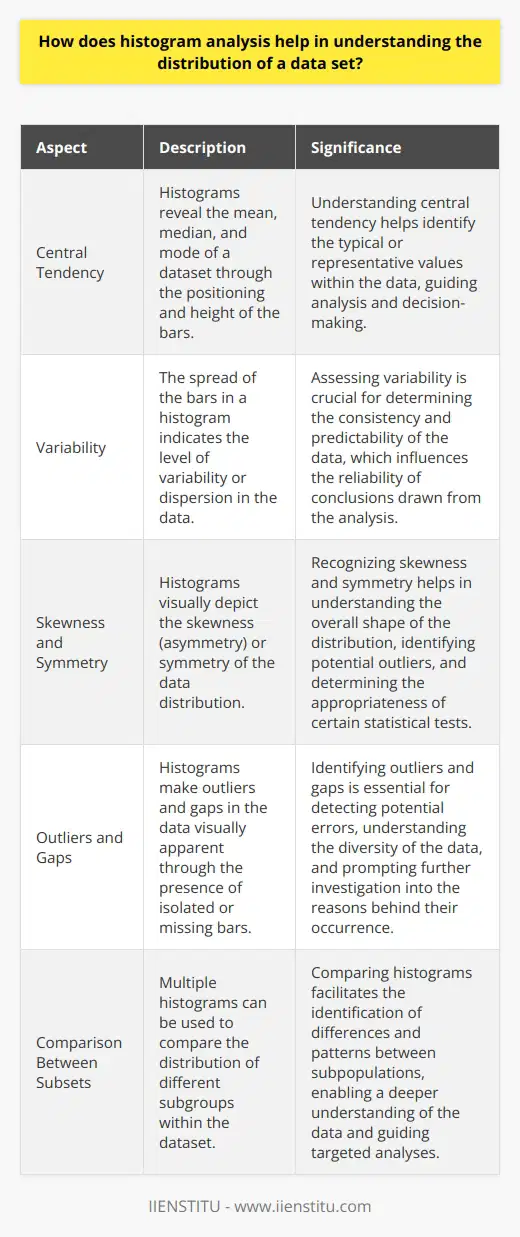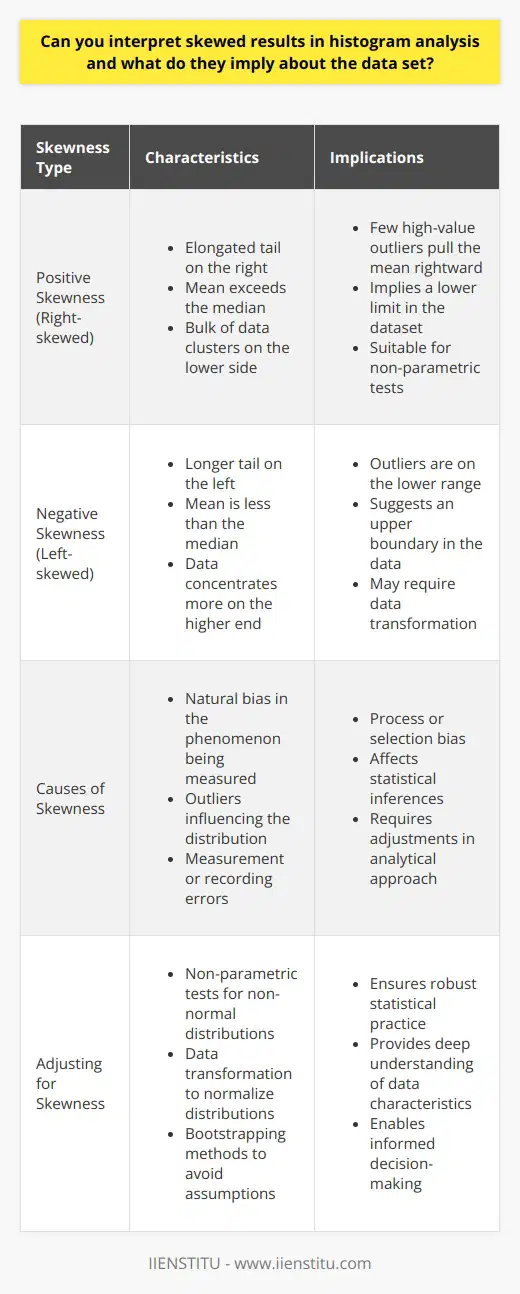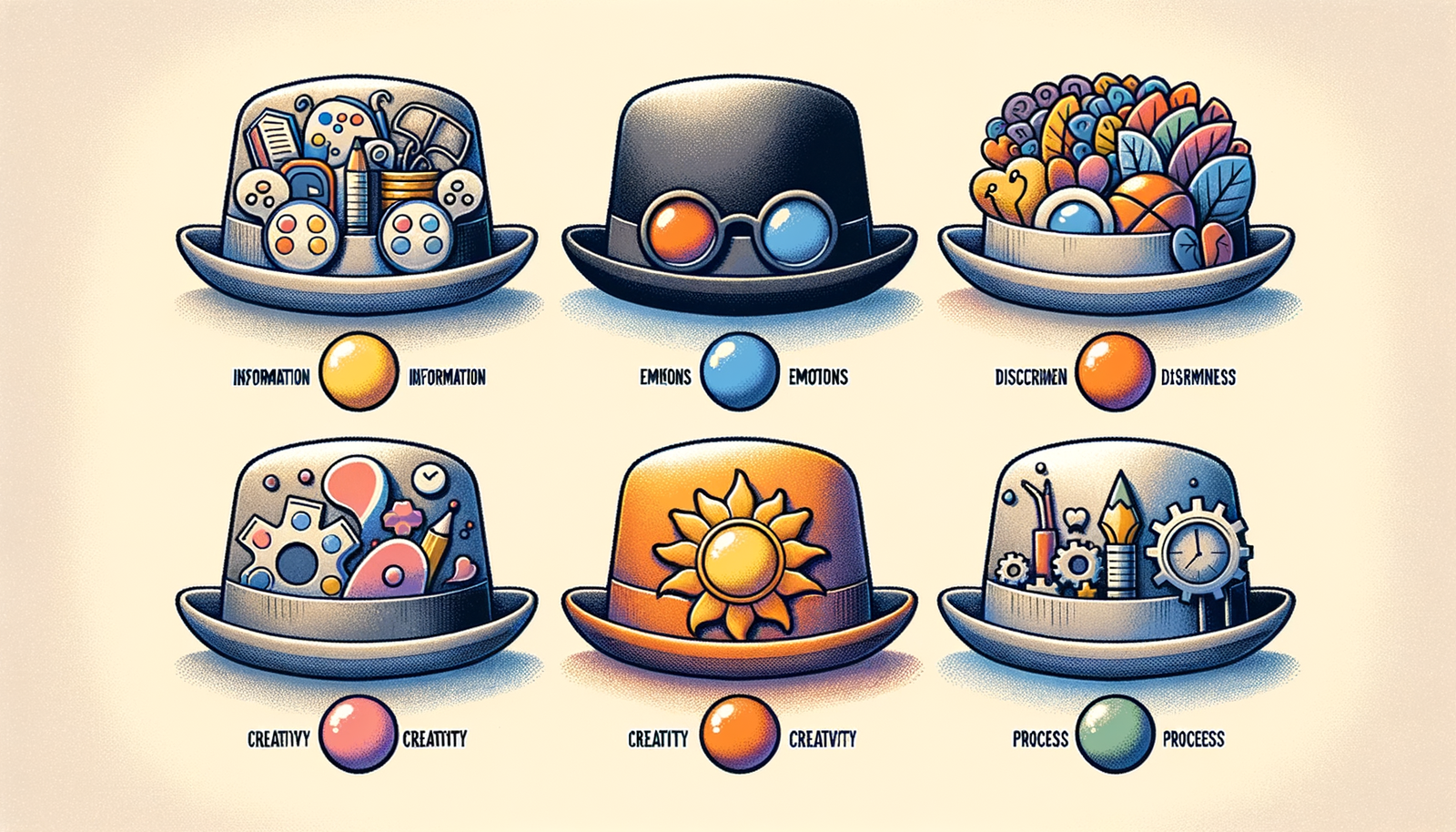
The significance of histograms in the world of data cannot be overstated. As a vital tool in data visualization, histograms provide a visual representation of numerical data by showing the number of data points that fall within a range of values, known as bins. This simplifies the complex process of statistical analysis and aids in effectively communicating data insights.
Their wide application across various fields – from finance and marketing to healthcare and social science – emphasizes their importance in data interpretation and analysis. As we delve into the nuances of histogram analysis, we recognize the profound value they bring to extracting and comprehending intricate data patterns.
Introduction to Histograms in Data Analysis
Histograms serve as a cornerstone within the realm of data visualization, transforming abstract numbers into comprehensible visuals. They function by aggregating data points into bins, which subsequently count the number of occurrences within these defined intervals. As a consequence, histograms facilitate a deeper exploration and understanding of underlying data distributions, revealing tendencies, variations, and outliers that might otherwise remain concealed. Their pivotal role is not just in presenting the data but in unfolding the narrative hidden within the numerical landscape.
Understanding histograms is paramount to anyone engaged in empirical research or statistical evaluation. The construction of a histogram requires a careful balance – bin size, range, and count must be finessed to accurately reflect the underlying data distribution. As histograms form a foundational aspect of data interpretation, their insights can drive significant decision-making processes and strategic initiatives.
The emphasis placed on histograms within the context of data analysis springs from their versatile utility in identifying and communicating trends. Whether it is assessing customer behavior, measuring scientific phenomena, or plotting market fluctuations, the histogram stands as an indispensable tool for researchers and professionals alike.
Fundamentals of Histogram Interpretation
Understanding Histogram Structure
The histogram, by its very structure, is a testament to simplicity in the midst of complexity. It comprises several key components – bins, which are essentially intervals into which data points are grouped; counts, which indicate the number of data points within each bin; and the overall range, which provides the scope of data distribution. The categorization process within a histogram is critical, enabling the transformation of raw data into a format that is easy to analyze and interpret.
By segmenting data points by value, a histogram offers a visual understanding of the data's distribution. It outlines the frequencies of various outcomes, directly pointing to areas of concentration and sparsity. Understanding the structure of a histogram is not just academic; it is a practical step towards mastering the art of data interpretation.
Choosing the optimal number of bins and their respective ranges is an essential step in histogram creation. Too many bins can result in an overcomplicated and noisy visual, while too few may oversimplify the data, obscuring important details. Therefore, the insight drawn from a histogram is closely tied to its structural setup.
Significance of Histogram Shapes
Every shape carved out by a histogram tells a distinct story. For instance, a symmetric, bell-shaped curve often signifies a normal distribution – a pattern widely observed in nature and human activities. In contrast, a skewed distribution may suggest an anomaly or bias on one side of the spectrum. Uniform histograms, with relatively equal counts across bins, denote an even spread of data, whereas bimodal distributions point to the existence of two dominant groups within the dataset.
Each of these shapes facilitates a different kind of dialogue with the data. By recognizing the nuances within these patterns, a practitioner can extrapolate meaningful conclusions about the characteristics and dynamics of the dataset under study. For example, in a problem solving course free of excess technical jargon, students might be introduced to these concepts, enabling them to better understand and navigate the intricacies of the data they encounter.
Moreover, the shapes of histograms are not merely for passive observation but serve as a launchpad for further investigation and questioning. Why is the data skewed? What factors contribute to a bimodal distribution? Interrogating the data shape can lead to richer and more profound data insights.
Histogram Analysis Techniques
Choosing the Right Bin Width
The granularity of data representation in a histogram is largely determined by the choice of bin width. The keen task of setting the right bin size is crucial for unveiling the subtle nuances and patterns that lie within the histogram. Small bins might expose the data to noise and overemphasize inconsequential fluctuations, whereas excessively broad bins could mask significant data trends.
To ensure clarity and accuracy in data representation, adherence to guidelines for bin selection is advocated. One such guideline is the square-root choice, where the number of bins is set to the square root of the number of data points. Another popular approach is Sturges' formula, which takes into consideration both the size and variability of the dataset. By carefully calibrating bin width, a practitioner augments the interpretative power of the histogram, transforming it from a mere graphical representation to a potent analytical tool.
Identifying Outliers and Patterns
Detecting anomalies within data is another forte of the histogram. Outliers, those data points that lie conspicuously beyond the general spread of the dataset, emerge poignantly against the backdrop of a histogram. These outliers may signify exceptions that warrant further investigation or errors that demand correction.
In addition to spotting outliers, the histogram assists in discerning patterns and trends integral to understanding the dataset. Whether it's a trend towards an increase or decrease over a range or the oscillation of data points suggesting a cyclic phenomenon, these patterns are conveyed powerfully through histogram visualization. When enrolled in an online mba course, a student familiar with histograms can adeptly interpret these trends and capitalize on the insights for practical applications in business contexts.
Recognizing these visual patterns is not just about observation, but also about correlating them with potential causal factors. Discussion around patterns in histogram analysis propels the conversation from descriptive to inferential, where one can begin to hypothesize about the underlying forces that shape the data.
Advanced Histogram Analysis for Data Insights
Comparing Datasets with Histograms
Histograms rise to yet another level of sophistication when employed to compare multiple datasets. Layering histograms enables analysts to juxtapose data distributions and unearth disparities or similarities among different sets. This comparative analysis is especially potent when examining cohorts, time periods, or varied conditions.
Overlaying histograms can be particularly revealing, as it allows for direct visual comparison. For instance, pre- and post-intervention datasets can be overlaid to assess the efficacy of a policy, treatment, or strategy. These comparative insights are instrumental in fields like healthcare, where patient outcomes for various treatments can be compared, or in finance, where market conditions can be contrasted across different periods.
Utilizing Histograms for Predictive Analysis
Histograms serve as an invaluable resource in predictive analysis and forecasting endeavors. By understanding the current distribution of data, one can infer potential future trends and outcomes. This aspect of histogram analysis crosses the boundary into predictive modeling and forecasting, hence proving its mettle in complex domains like machine learning and advanced statistical computation.
The historical frequency of occurrences, as depicted by a histogram, can inform probabilistic models that predict future events. Machine learning algorithms, for instance, often rely on historical data distributions to train and test predictive models. These models can then forecast trends or classify new data based on learned patterns.
Practical Applications of Histograms in Various Fields
Histograms are employed ubiquitously across various sectors to unlock insights from data. In finance, histograms are used to analyze the distribution of investment returns or risk profiles. Marketers rely on histograms to understand consumer behavior patterns, such as purchase frequencies or response to advertisements. Healthcare professionals use histograms to study patient outcomes, to gauge the effectiveness of treatments, or to track the spread of diseases. In scientific research, histograms provide clarity in the analysis of experimental data, from particle physics to ecology.
These applications demonstrate the versatility and potency of histograms in revealing essential information that drives informed decision-making. Real-life case studies continue to exemplify the transformative impact that histogram analysis wields in both business and scientific exploration.
Conclusion and Best Practices for Histogram Analysis
To sum up, histograms are a dynamic and multifaceted tool in the data analyst's repertoire. Their utility in depicting, comparing, and predicting data trends is unparalleled. As we continue to venture into the data-centric future, the importance of harnessing the full potential of histogram analysis grows ever more significant.
Some best practices in histogram interpretation include avoiding overfitting bins to the data, considering the context of the data when evaluating histogram shapes, and complementing histograms with other statistical analyses. Effective use of histograms hinges on understanding their limitations and possibilities, enabling us to draw conclusions that are both meaningful and accurate.
Amidst a vast sea of numerical information, histogram analysis stands as a guiding lighthouse, illuminating the path to impactful insights. It is incumbent upon researchers, students, and professionals to continue honing their skills in this area. Participating in further education, such as enrolling in a problem solving course free of outdated approaches or an innovative online mba course, can help deepen understanding and proficiency in histogram analysis.
Additional Resources
For those intent on mastering histogram and statistical analysis skills, a multitude of resources exist. Academic texts, online tutorials, and practical workshops provide avenues for further learning. Tools such as R, Python’s Matplotlib, and specialized software like Tableau offer robust platforms for the creation and analysis of histograms. Delving into these resources will enable individuals to leverage the full scope of histogram analysis, sharpening their ability to interpret and exploit data for informed decision-making and progress.
Frequently Asked Questions
What is the fundamental role of a histogram in data analysis?
Understanding Histograms in Data Analysis
Definition and Purpose
A histogram represents frequency distributions. It visualizes data dispersion. Users see the data shape. This view aids comprehension.
Role in Exploratory Data Analysis
Histograms are exploratory tools. They identify patterns and anomalies. Key roles include:
- Detection of skewness: Asymmetries appear clearly.
- Understanding distribution: Histograms show normal or irregular distributions.
- Identification of modality: Single or multiple peaks emerge.
Visualizing Data Spread
Histograms detail data dispersion. They plot continuous data intervals. Analysts ascertain ranges and frequency peaks. Variability becomes evident.
Comparing Groups
Analysts use histograms to compare groups. Differences and similarities stand out. Clear visual comparisons facilitate insights. Patterns become comparable.
Identifying Outliers
Outliers affect data interpretation. Histograms make outliers visible. Detection becomes easier. Effect on datasets becomes apparent.
Facilitating Hypothesis Testing
Histograms help validate assumptions. They show expected versus actual patterns. Empirical distributions support statistical tests.
Informing Data Transformation
Data often requires normalization. Histograms indicate the need. Skewed data suggests transformations. Symmetrical distributions validate normality assumptions.
Assisting in Bin Selection
Bin width impacts data interpretation. Histograms guide this selection. Users adjust bin sizes. They refine visual representations.
Enhancing Communication
Histograms convey complex data simply. They provide quick insights. Understanding transcends statistical expertise. Stakeholders grasp findings easily.
In summary, histograms play a crucial role in data analysis. They provide a visual interpretation of data distribution, allowing for easier detection of trends, abnormalities, and data characteristics that textual data cannot easily convey. Histograms serve as fundamental instruments for analysts to explore, understand, and communicate data effectively.

How does histogram analysis help in understanding the distribution of a data set?
Histogram Analysis in Data Distribution
Understanding Histograms
A histogram represents data visually. It uses bars. Each bar shows frequency. The data gets grouped. Groupings occur in 'bins'. Bins simplify continuous data. They make patterns detectable.
Insight into Central Tendency
Histograms show the data's central tendency. This includes the mean, median, and mode. Peaks represent modes. They are the most frequent bins. A single peak reveals a unimodal distribution. Multiple peaks suggest multimodality. These nuances inform data analysts. They suggest underlying tendencies within the dataset.
Variability of Data
Variability becomes apparent in histograms. Spread out bars mean high variability. Compact bars imply consistency. Variances are crucial. They help in assessing predictability. Predictability influences decision-making.
Skewness and Symmetry
Skewness concerns data asymmetry. Right skew indicates longer right tails. Left skew indicates the opposite. Symmetry suggests balanced data. Balance is often ideal. It is not always present, however. Skewness can inform transformations. Transformations aim for normality. Normal distribution favors many statistical tests.
Outliers and Gaps
Outliers stretch tails. They create deceptive peaks. Histograms make them visible. Visible outliers warrant investigation. They can indicate errors. Alternatively, they mean diversity. Gaps signify data absence. These absences prompt questions. Why no data? Is it relevant? Histogram analysis includes these anomalies.
Comparison Between Subsets
Multiple histograms aid in comparison. They visualize differences between groups. Patterns may vary. Comparisons help to highlight these variances. This aids in understanding population differences. Subgroup analyses become easier.
Detecting Bimodal Distributions
Bimodal distributions are notable. They show two modes. This can mean subpopulations. Subpopulations may have different characteristics. Recognizing bimodality is vital. It suggests examining subgroups.
Making Decisions Based on Distribution
Histograms guide decisions. They do so by providing data insights. These insights regard distribution, skewness, kurtosis, outliers, and other aspects. Data-driven decisions rely on such graphics.
Histograms are basic yet powerful. They bring complexities to light. Analysts rely on them. They translate numbers into visual stories. These stories depict the dataset's nature. Histograms are tools. They serve to clarify the underlying structure of data. They support informed decisions. These decisions stem from empirical evidence. Histograms thus become indispensable in data analysis.

Can you interpret skewed results in histogram analysis and what do they imply about the data set?
Understanding Skewed Results in Histogram Analysis
Histograms provide visual summaries of data distributions. They can reveal the shape, central tendency, and variability of a dataset. A perfectly symmetrical distribution is rare in real-world data. More often, histograms show skewed results. This skewness tells us about the nature of the dataset.
Identifying Skewness
Skewness refers to the asymmetry in the distribution of data. There are two types of skewness:
- Positive skewness (or right-skewed)
- Negative skewness (or left-skewed)
Positive skewness shows an elongated tail on the right. Here, the mean exceeds the median. Conversely, negative skewness has a longer tail on the left. The mean is less than the median.
Interpreting the Implications of Skewness
Skewed data imply an uneven distribution of values within a dataset. The direction of the skewness gives insights into the nature of the data.
For Positive Skewness:
- Bulk of data clusters on the lower side.
- Few high-value outliers pull the mean rightward.
- Implies a lower limit in the dataset.
For Negative Skewness:
- Data concentrates more on the higher end.
- Outliers are on the lower range.
- Suggests an upper boundary in the data.
Causes and Considerations
Skewed results can stem from various sources.
- Natural bias in the phenomenon being measured.
- Outliers influencing the distribution.
- Measurement or recording errors.
- Process or selection bias.
Analyzing skewness is crucial. It affects statistical inferences.
Adjusting for Skewness
When faced with skewness, analysts often adjust their approach.
- Non-parametric tests cater to non-normal distributions.
- Data transformation can normalize distributions.
- Bootstrapping methods avoid assumptions about data shape.
Conclusion
Interpreting skewed results in histogram analysis is elemental. It provides deep understanding and highlights data characteristics. Adjusting for skewness ensures robust statistical practice. Always account for skewness to make informed decisions from data.



